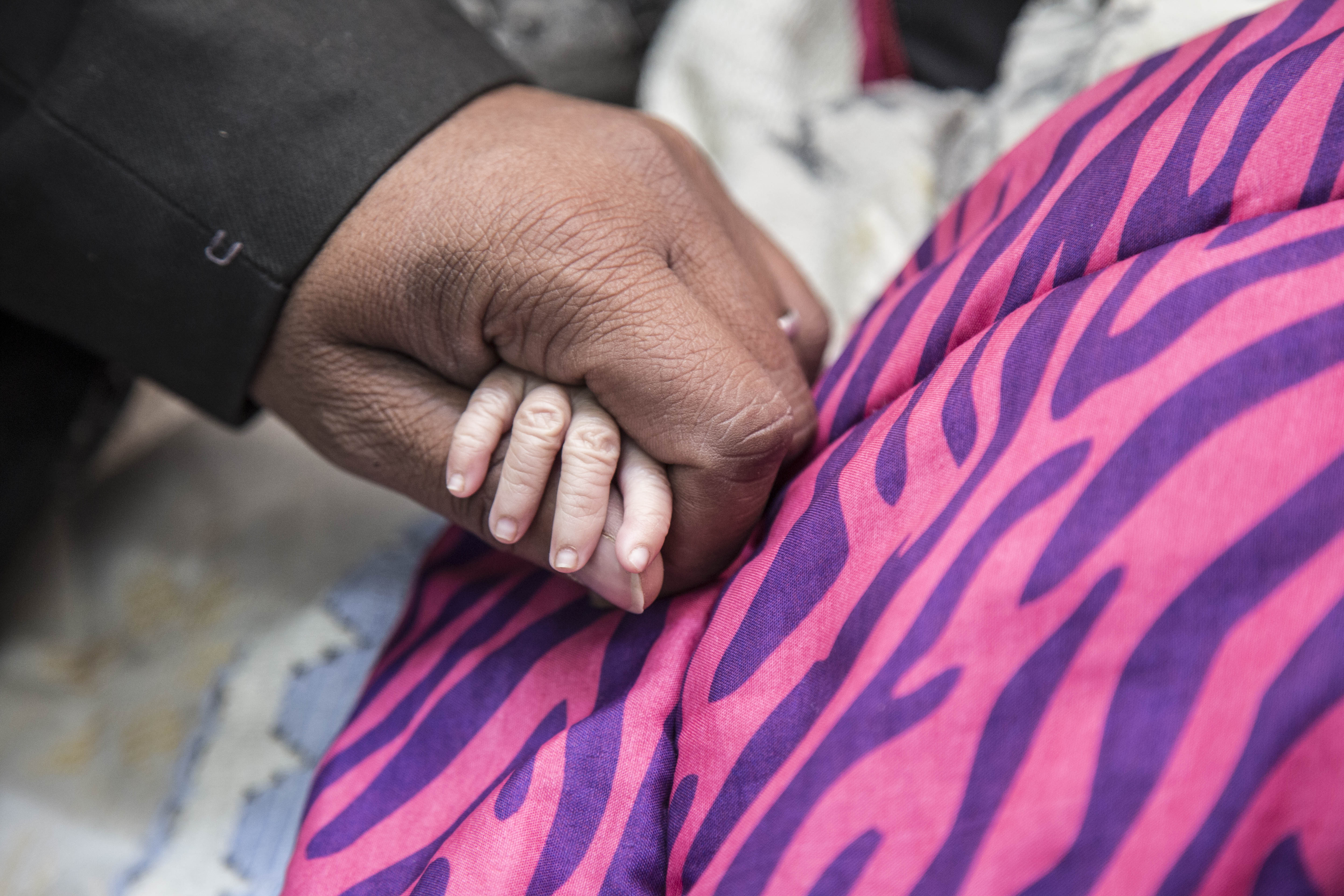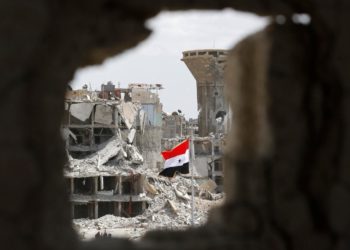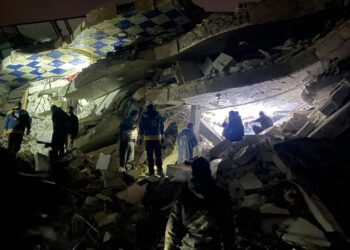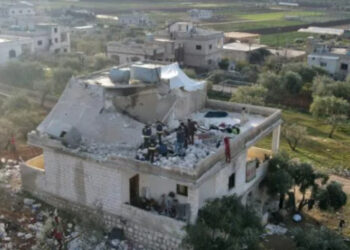They survived the Islamic State group’s crumbling “caliphate” by a thread, but skeletal babies streaming into this displacement camp in northeastern Syria now face a race against malnutrition.
Truckloads of gaunt women and children fleeing IS’s last stand in the Euphrates Valley disembark daily at the Al-Hol camp, including 200 who arrived Thursday.
“They’re just skin and bones when they get here,” Kurdish Red Crescent (KRC) pediatrician Dr. Antar Senno told AFP at a makeshift clinic in Al-Hol.
They have suffered desperate conditions in the last pocket held by IS near the village of Baghouz, close to the Iraqi border, with little food, water or medicine.
KRC workers quickly scan the infants – particularly those under a year old – for thin limbs, taut and dried-out skin, or signs of diarrhea, said Senno.
“The team combs the entire reception tent. If they see a case that could be malnutrition, they immediately pull the child aside and put him in an ambulance,” he said.
A Deadly Desert Odyssey
But the journey does not end there.
Medics at Al-Hol, which has been flooded with more than 25,000 displaced people in recent weeks as military operations ramped up, do not have the capacity to treat severely malnourished children and must send them on to hospitals in the city of Hasakeh an hour away.
That makes every moment even more precious, said Senno.
“They’re practically dead when they get here. But if we can catch them and send them to hospital in Hasakeh, we can save their lives,” he said.
“It’s not about the same day. It’s about the same minute.”
.@UNinSyria & @SYRedCrescent are at Rukban makeshift settlement providing urgently needed assistance to over 40,000 people. On day 1, over 650 children vaccinated & almost 200 screened for malnutrition. @OCHA_Syria is there coordinating the delivery of assistance pic.twitter.com/UIOulLnRwk
— OCHA Syria (@OCHA_Syria) February 8, 2019
More than 37,000 people have fled the shrinking IS-held enclave in the eastern province of Deir Ezzor as the U.S.-backed Syrian Democratic Forces bear down on the jihadists.
Many walk for days in the desert to reach an SDF-run collection point, where they are screened, provided with some food and water and loaded into trucks for the hours-long journey north to Al-Hol.
But that desert odyssey can be deadly – at least 35 newborns and infants have died either en route to the camp or just after they arrive, according to the United Nations.
One camp worker told AFP he saw women tumble out of trucks cradling lifeless babies, not knowing they had died on the road.
Three-month-old Ahmad had a close call, said his Iraqi mother, Istabraq.
“I was breastfeeding while in Baghouz but it wasn’t enough,” the 22-year-old said.
They escaped 20 days ago and were brought to Al-Hol.
“He was in really bad shape so, when we arrived here in the camp, they took him straight from the reception area to the hospital,” she told AFP inside her tent.
She was allowed to accompany him to Hasakeh for the day but has not been authorized to return.
Authorities at Al-Hol have imposed tight security measures amid fears jihadists could be posing as fleeing civilians.
“If they could let me out, I just want to breastfeed him once,” she said.
Wasting Away
Severe acute malnutrition (SAM) can be life-threatening for children, particularly infants who could literally waste away.
Across war-ravaged Syria, 18,700 children under five are suffering from SAM, according to the World Food Programme.
The KRC told AFP it had transferred dozens of SAM cases from Al-Hol to Hasakeh in recent weeks, including 29 currently being treated there.
But infants can become malnourished even after they arrive at Al-Hol, said the Mar Ephraem medical charity, which operates a children’s clinic in Al-Hol.
Women streamed into the clinic on Thursday, placing sniffling infants on a measuring board then on a small scales to check if they were stunted or underweight.
“If they are suffering from chronic diarrhea and dehydration, we send them to the hospital immediately,” said nurse Marah al-Sheikhi.
“It’s extremely urgent. If you’re an hour late, that makes a difference to a malnourished child,” she told AFP.
On Thursday, Mar Ephraem ordered one baby’s emergency transfer to the hospital.
Three-month-old Yaqin had arrived in Al-Hol over a week ago, carried by her mother, Shamaa.
“We’ve been here 10 days but her weight keeps going down, not up. She has diarrhea and is vomiting,” said Shamaa, 23, pacing anxiously as she waited for an ambulance to Hasakeh.
“Now I found out she has severe malnutrition. I’m so scared for her,” she said, cradling Yaqin, who was so weak she was not even crying.
More on the Subject
Asl lawmakers in the U.S. prepared to vote on a war powers resoloution seeking to end American involvement in the war in Yemen in November, humanitarian officials were warning that the country is on the brink of a near-apocalyptic disaster.
“The violence will have to stop. Unless it does, this country will become a country of living ghosts,” Abeer Etefa, the Senior Spokeswoman for the United Nations World Food Program, told The Globe Post.
According to the U.N., Yemen is already facing the world’s worst humanitarian crisis. A recent study estimates that at least 85,000 children have died of extreme starvation as a result of the war and experts warn that millions more are at risk of suffering the same fate if fighting continues.
























